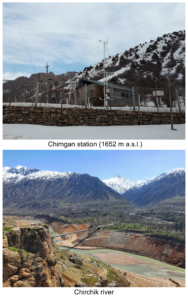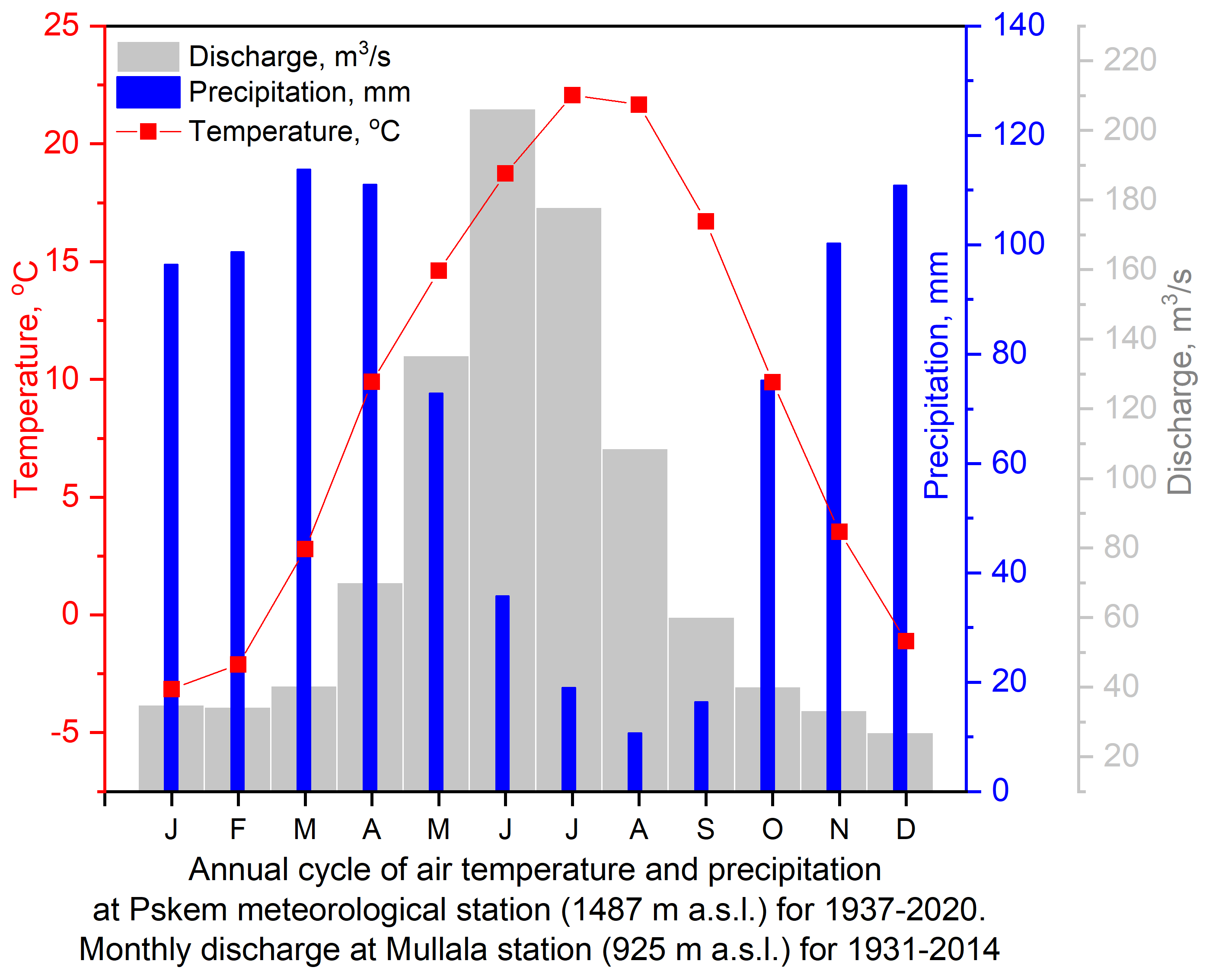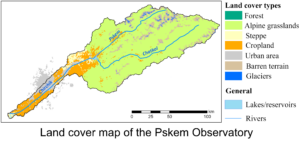 The Pskem Observatory is managed by the Centre of Glacial Geology, Abdullaev Institute of Geology and Geophysics, Uzbekistan. The Observatory is located in the western Tien Shan whose rivers provide water for the vast agricultural lands and many villages, towns and the city of Tashkent (the largest in Central Asia) located in the piedmonts and oases and surrounded by deserts. Due to the strong dependency of the region on mountain runoff, generated by snow and glacier melt, the Pskem Observatory has always focused on the provision of data required to assess water availability including glacier mass balance, snow, and streamflow data. In 1957, the combined area of glaciers in the Pskem basin was 127.8 km2; in 2020, it was 97.5 km2.
The Pskem Observatory is managed by the Centre of Glacial Geology, Abdullaev Institute of Geology and Geophysics, Uzbekistan. The Observatory is located in the western Tien Shan whose rivers provide water for the vast agricultural lands and many villages, towns and the city of Tashkent (the largest in Central Asia) located in the piedmonts and oases and surrounded by deserts. Due to the strong dependency of the region on mountain runoff, generated by snow and glacier melt, the Pskem Observatory has always focused on the provision of data required to assess water availability including glacier mass balance, snow, and streamflow data. In 1957, the combined area of glaciers in the Pskem basin was 127.8 km2; in 2020, it was 97.5 km2.
Regular monitoring of glacier mass balance and climate began at the Pskem Observatory in the 1960s. Several meteorological stations and streamflow gauges were established along the rivers Oygaing and Pskem forming the headwaters of the Chirchik catchment complementing the long-term measurements at the Maydontal station (dating back to the 1930s) and Tashkent (one of the oldest stations in the region with measurements dating back to the 1890s). Mass balance measurements were established at the Barkrak Middle glacier in 1970 and continued until 1990 but were interrupted following the collapse of the Soviet Union.
In 2016, regular glacier mass balance monitoring was resumed at the Barkrak Middle (Hoelzle et al., 2017) with the help of the CATCOS project and a new automatic weather station (AWS) was installed near the glacier tongue at 3443 m a.s.l. Currently, the Observatory conducts regular in situ glacier mass balance measurements and snow surveys and monitors glacier change using remote sensing. It has established collaboration with the National Hydrometeorological Service and Hydrometeorological Institute of Uzbekistan whose meteorological stations and streamflow gauges extent between 2181 m and 477 m within the Observatory’s domain. The Observatory assesses risks of extreme events including floods, landslides, and debris flows. The Observatory runs an isotope and hydrochemistry sampling programme collecting precipitation (Saidaliyeva et al., 2023), river water and cryosphere samples as well as measurements of water quality.


